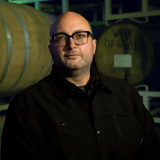Risk Analysis
The Sharpe Ratio
A risk/return measurement used in finance
Understanding the Sharpe Ratio
Since William Sharpe's creation of the Sharpe ratio in 1966, it has been one of the most referenced risk/return measures used in finance, and much of this popularity is attributed to its simplicity. The ratio's credibility was boosted further when Professor Sharpe won a Nobel Memorial Prize in Economic Sciences in 1990 for his work on the capital asset pricing model (CAPM).
Why is this a useful tool in validating Bourbon as a investment? The Sharpe Ratio takes into account not only the return of an investment but also the risk involved in achieving that return. In the case of investing in Bourbon held by The Bourbon Reserve WEIT funds, the predictable growth pattern and low standard deviation mean that the Sharpe Ratio is high, indicating that the risk-adjusted return is very attractive. But it is important to examine investments in the context of opportunities.
First, let's talk numbers!
Most investors want to know how one investment compares to another. For example, if investment A returns 18% and investment B returns 30%, which is better? Most would say B is the better investment, but what about risk?
One tool to help investors compare two (or more) investments, considering both risk and return, is the Sharpe Ratio.
- A Sharpe Ratio is calculated by dividing the return of an investment, in excess of a risk-free rate, by the risk of the investment (standard deviation).
- Sharpe Ratio tells an investor how much return is earned per unit of risk. In plain English, a Sharpe Ratio tells an investor how much “bang for your buck” an investment offers.
- As a general rule, when comparing investments opportunities, the investment with the higher Sharpe Ratio usually represents the investment with the most bang for your buck.
William Sharpe established the following guidance to help investors make prudent investment decisions when utilizing the Sharpe Ratio:
SHARPE RATIO LESS THAN 1=BAD
SHARPE RATIO OF 1-1.99=ADEQUATE/GOOD
SHARPE RATIO OF 2-2.99=VERY GOOD
SHARPE RATIO GREATER THAN 3=EXCELLENT
Stability of Bourbon as an Asset
Let's establish some facts about the Global Bourbon Market.
- Global demand for Bourbon is higher than the available supply.
- Europe, India, Japan and other non-domestic regions have seen demand for Bourbon increase over the past decade.
- Domestic consumption is also on the rise and this trend is predicted to continue for the foreseeable future.
- Unlike most other distilled spirits or wine, Bourbon enjoys a federally protected definition codified under Title 27 of the Code of Federal Regulations: Bourbon must be made in the United States, have a mash bill of at least 51% corn, be aged in new American white oak charred barrels.
Sharpe Ratio of Bourbon Reserve Funds
What about Bourbon as an Investment?
Investing in Bourbon held by The Bourbon Reserve WEIT funds also comes with unique financial benefits:
- Bourbon increases in value as it ages in the barrel.
- Bourbon has a consistent growth pattern, with the highest year-over-year growth rates occurring in the first four years of aging (approximately 25% per year).
- This predictable growth pattern results in a low standard deviation, meaning a low degree of risk compared to other investments.
In essence, investing in Bourbon provides a reliable performance with minimal risk, making it an attractive investment opportunity.
What are the tax implications?
Savvy investors know that the tax implications of an investment are important.
- At The Bourbon Reserve, we have structured our investment strategies to maximize tax benefits for our investors.
- Each WEIT investment is designed to allow distributions to be classified as a long-term capital gain as defined by US 26, section 1222.
- This unique structure enables us to offer highly tax-efficient income and growth strategies.
- By way of comparison, a REIT (real estate investment trust) issues dividends, which are generally taxed as ordinary income. With WEIT, investors can enjoy the benefits of long-term capital gains tax treatment.
Please contact your chosen tax professional for advice on your specific situation.
Recent Posts




